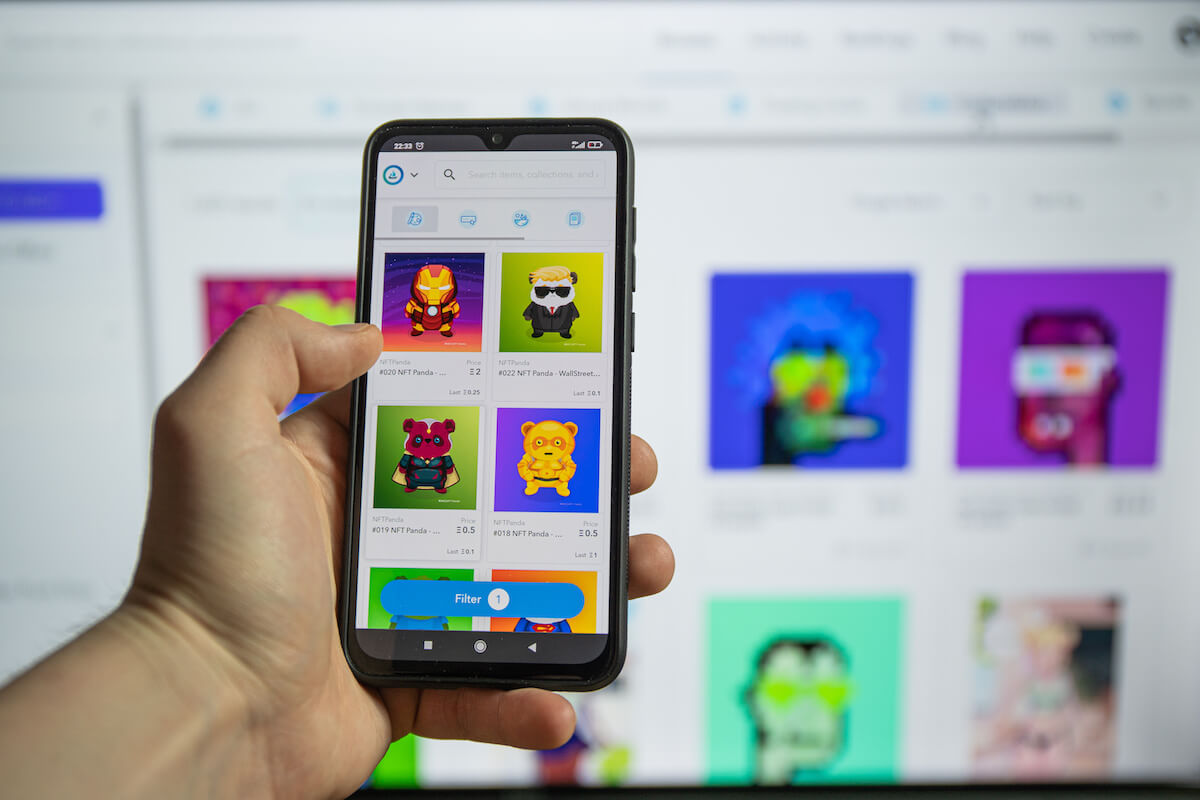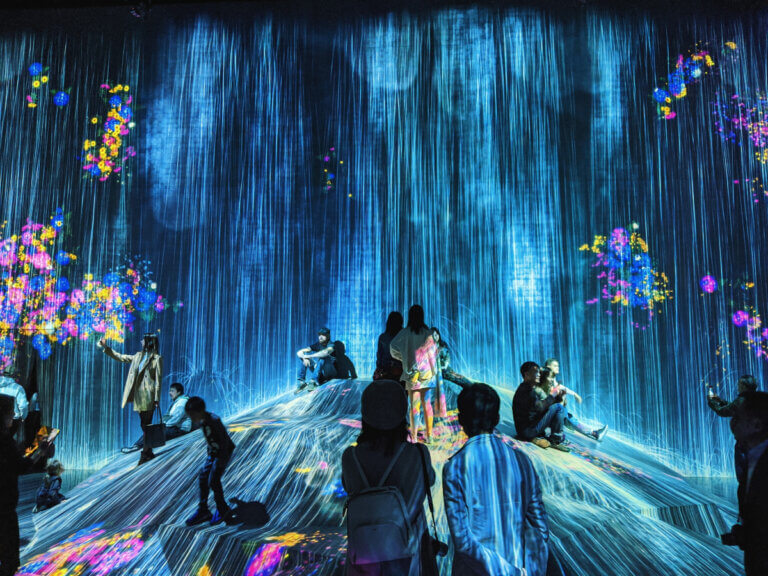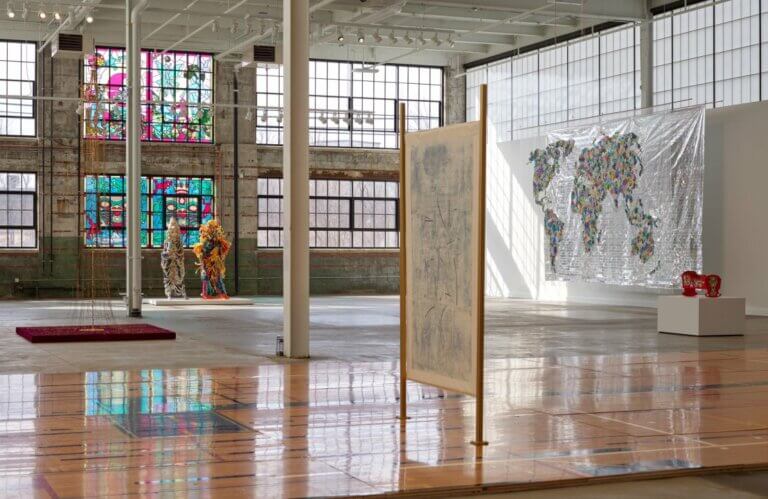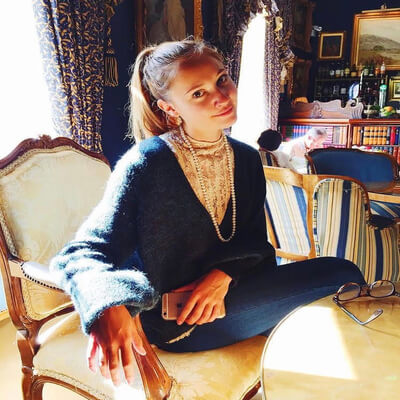NFT art has been around since 2014, but it’s only recently started picking up steam as a mainstream art form.
What Is NFT Art?

An NFT — meaning a non-fungible token — is essentially a digital certificate that gives art pieces a stamp of authenticity because it can’t be reproduced or recreated. Artists use the technology to create digital imagery of everything from Pokémon characters to pop art, and some of it is selling for big bucks — think upwards of seven figures.
In 2021, an NFT artwork titled “Everydays – The First 5000 Days” by the artist known as Beeple sold for $69 million at Christie’s, which made him one of the top three most valuable artists alive today.
Of course, not every NFT artist is raking in that kind of cash. But the digital art form has presented new opportunities for artists around the world.

NFTs Provide Opportunity to Break into Art Industry
Toronto-based artist Blue M. Betül says that for her, NFT art provided an opportunity to sell her creations without needing to be tapped into a network in the art world.
“It was mostly an opportunity to finally be able to put value on my art,” she says. “Before this, there was a lot of gatekeeping in the art world.”
Betül recently to Toronto from Turkey, so the digital art world provided her with a sense of community when she was just finding her footing in a new country.
“It’s hard to find jobs in art fields, but with NFTs you can sell your art online without a network,” she says. “When I came here two years ago I had zero network — I came here by myself without family and I didn’t know where the art community was, where the galleries were, or how the system works in a different continent but with NFTs, I didn’t need anyone. I learned it myself and put my mind to it and put value on my art, that was my main motivation.”
‘The NFT World Is Changing’
As NFT art continues to gain popularity and exposure in the mainstream art world, however, Betül says she’s beginning to see more of the gatekeeping and elitism of the traditional art world creep in. She noted that more and more, the NFT world is becoming more concerned about clout, how many followers you have on Instagram, or which collectors you can draw into the invitation-only platforms.
“The NFT world is changing and there’s starting to be more gatekeeping now because people who have money are controlling it, so it’s going back to where it was,” she says. “But the most important thing was being able to put value on my art, that got me excited in the beginning.”
Related Articles
Now, NFT collectors are opening digital galleries in the Metaverse where they can showcase their art virtually.
NFT Art Isn’t Just a ‘Get-Rich-Quick Scheme’
But for Betül and many other artists, NFT art isn’t just a get-rich-quick scheme. It’s just as much of an opportunity to express her views on politics, social movements and life as physical art is.
“I do a lot of political work because I like to send a message through art,” she says. “It’s different than just reading the news. People think twice on it, so I get a lot of inspiration from politics and world situations.”
During the pandemic, Betül’s NFT artwork served as an opportunity to express the loneliness and frustration that came along with the lockdown. Her piece Quarantine Ghosts captures the eerie feeling of spending days on end completely alone yet bombarded with imagery, information and messages online.
“When I first came to Toronto, after three months, COVID hit and I was just living on my phone,” she says. “I didn’t interact with a human for two months and I started feeling like I was a ghost and thinking, ‘Am I really interacting with people through my phone or is this all just digital?’ So, this piece is about the frustration of being alone.”
The Environmental Impacts of NFTs
Although NFTs have served as a new mode of expression and income stream for artists around the world, they have also stirred up controversy over their environmental impacts. The cryptocurrencies like bitcoin and Ethereum that power NFTs are the source of millions of tons of carbon emissions, which contribute to global warming and climate change issues.
However, artists have the option to use CleanNFTs, which are powered by Proof-of-Stake (PoS) networks instead of crypto. These networks are much more energy efficient than Ethereum or blockchain, but Betül mentioned it can be more difficult to make money with CleanNFTs because the platforms that use PoS networks haven’t gained enough exposure yet.
In the grand scheme of things, NFT art is still in its infancy, but Betül believes the medium is here to stay.
“I think we are really in the early stages still, and NFTs will continue to evolve and change over time. It’s just a baby right now — we don’t know where it’s going to go,” she says. “But it’s an opportunity for a lot of people especially for third-world artists. If I sell $1 on an artwork, it’s nothing here, but for other countries it’s a big opportunity for them.”
Lead credit image: Pictured is a tablet with the NFT artwork “EVERYDAYS: THE FIRST 5000 DAYS” by th artist known as Beeple. Photo by Ascannio via stock.adobe.com.







